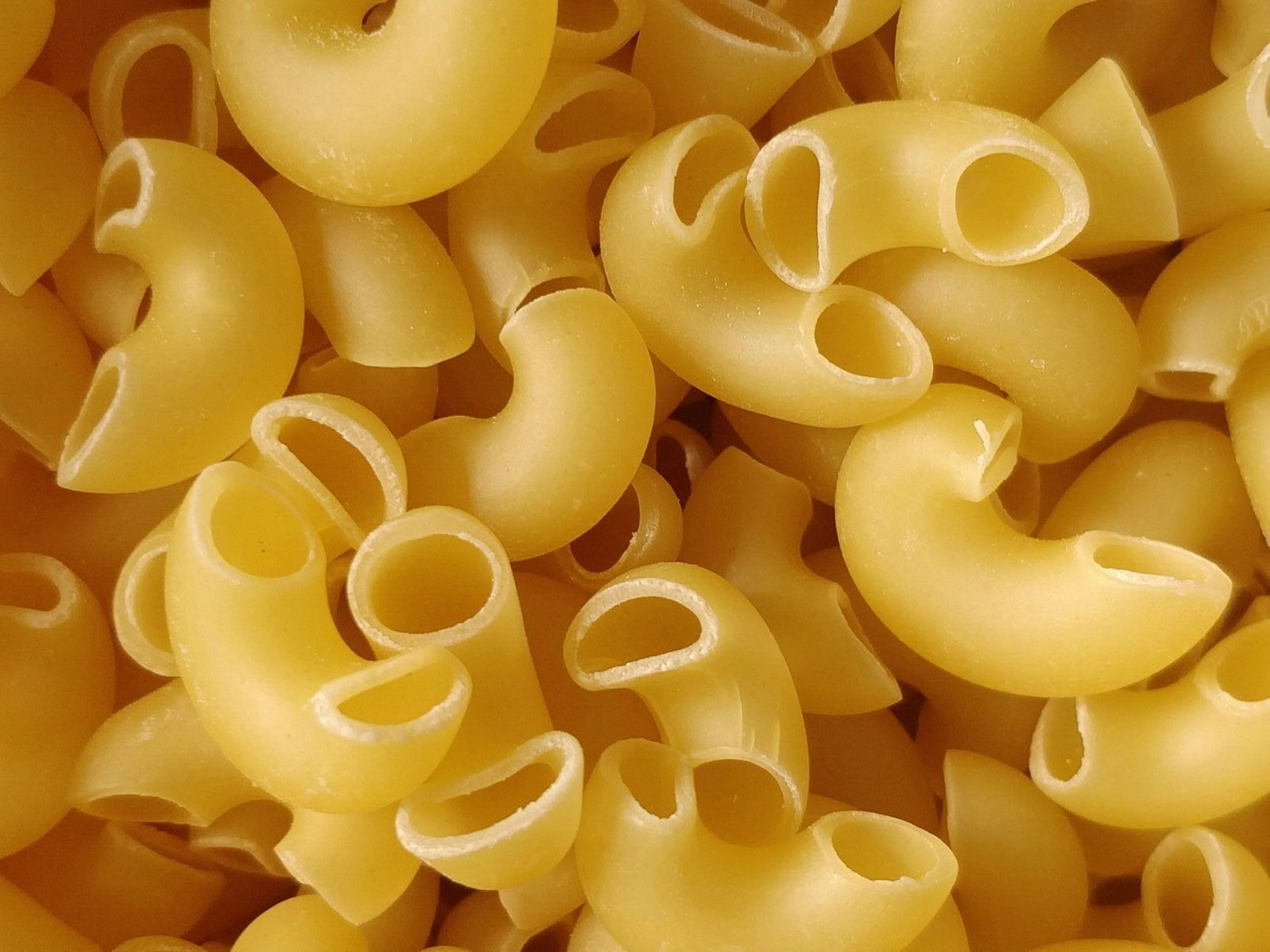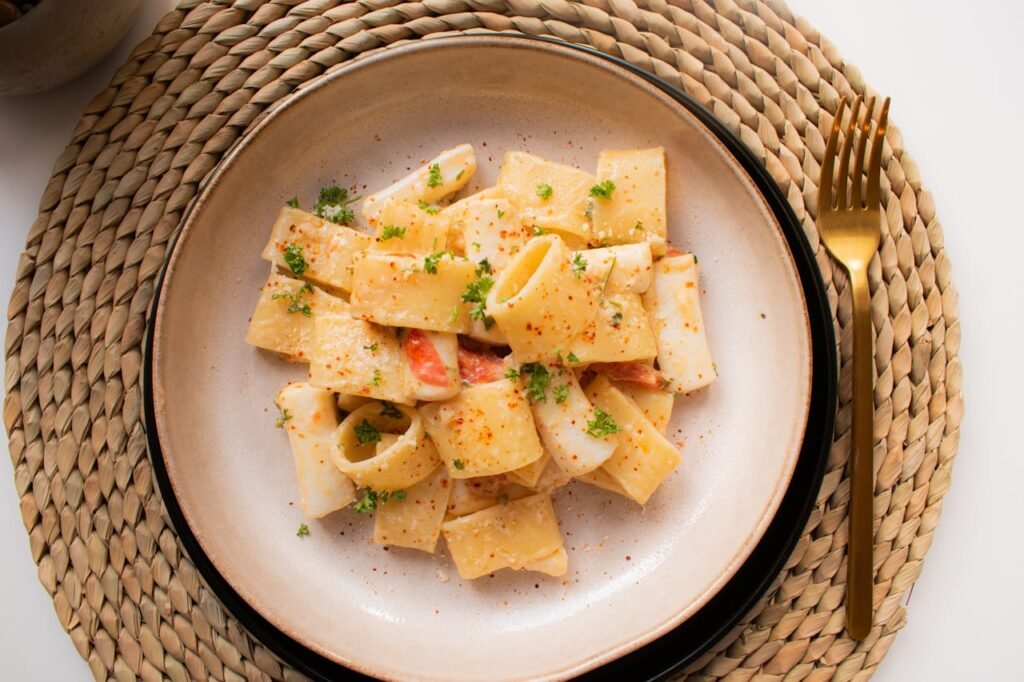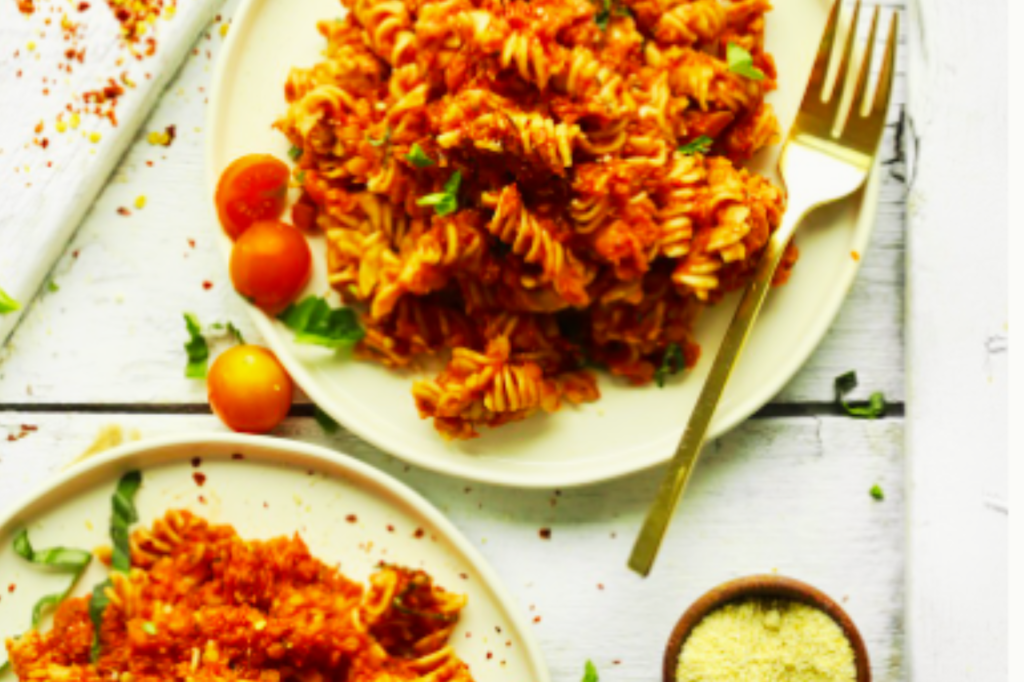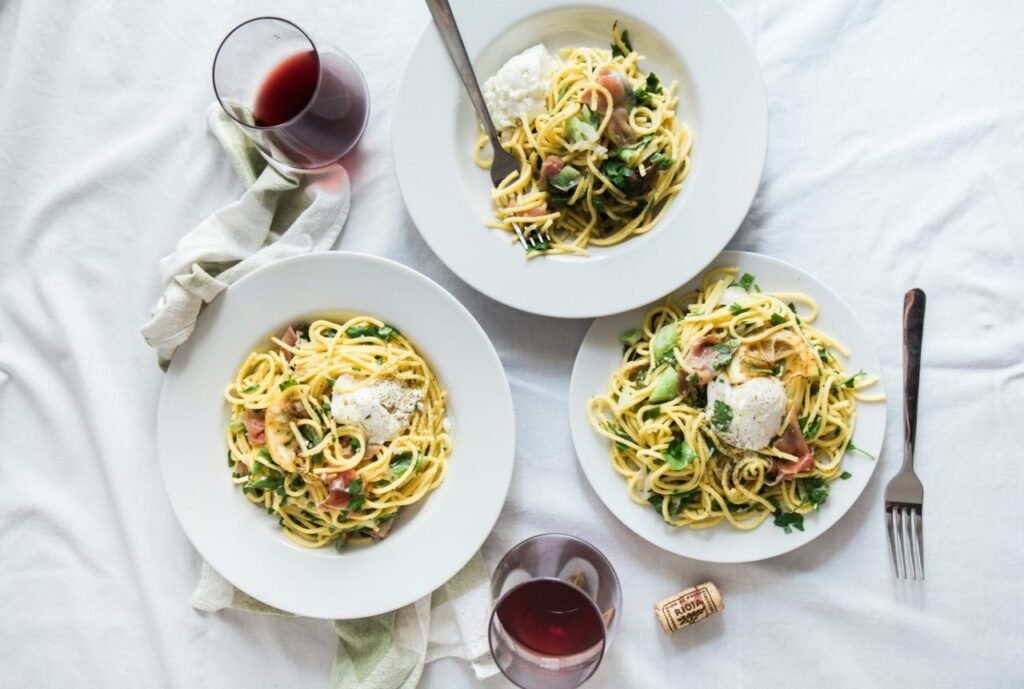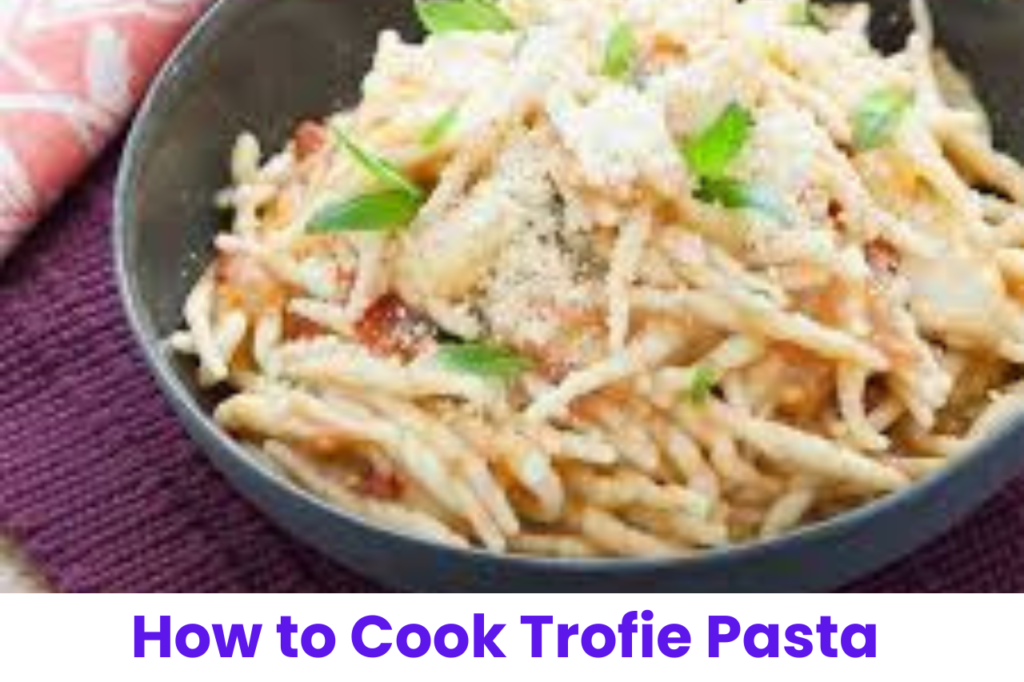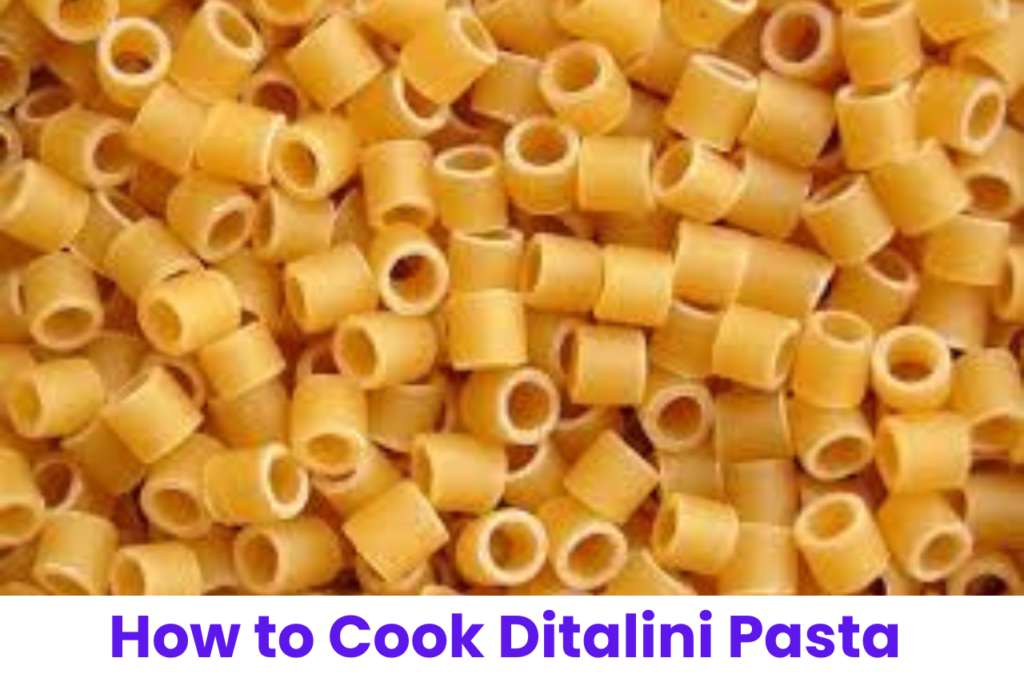Elbow pasta, known for its distinctive curved tube shape, is a beloved ingredient in countless pasta dishes. Whether you’re preparing an exemplary macaroni and cheddar, a reviving pasta salad, or a generous goulash, becoming the best at cooking elbow pasta flawlessly is fundamental for accomplishing the best surface and flavor in your dishes. In this comprehensive guide I will guide you how to Cook Elbow Pasta.
Elbow pasta, likewise called macaroni, is a flexible pasta shape that started in Italy and has since turned into a staple in foods all over the planet. Its hollow, curved design makes it perfect for capturing sauces and cheese, ensuring every bite is packed with flavor.
In this comprehensive guide, we’ll delve into the specifics of cooking elbow pasta, covering everything from preparation to determining the ideal cooking time based on your desired pasta texture. Whether you prefer your pasta al dente or fully cooked, understanding how long to cook elbow pasta is key to elevating your pasta creations.
Understanding Elbow Pasta
Elbow pasta, scientifically known as “semolina macaroni,” is a type of pasta characterized by its small, curved tube shape. It is ordinarily produced using durum wheat semolina flour, which empowers it to hold up well in different cooking strategies. The name “elbow” derives from its resemblance to the human elbow, making it a recognizable and popular pasta shape.
This pasta assortment is broadly utilized in exemplary dishes like macaroni and cheddar, pasta servings of mixed greens, goulashes, and soups because of its capacity to trap sauces and fixings inside its empty cylinder. Elbow pasta is also a favorite among children and adults alike for its fun shape and versatility in cooking.
When purchasing elbow pasta, it’s essential to select a high-quality product made from durum wheat semolina, which ensures a sturdy texture and pleasant bite after cooking. Elbow pasta is available in both regular and gluten-free varieties to accommodate dietary preferences.
In culinary terms, elbow pasta is considered a short pasta shape, distinguished by its small size and ability to pair well with a wide range of sauces, from creamy cheese-based sauces to light olive oil dressings. Its short cooking time makes it convenient for quick meals, and its shape makes it ideal for baked dishes where the pasta absorbs flavorful sauces.
Cooking elbow pasta is straightforward, but achieving the perfect texture requires careful timing and attention to detail. The next section will explore the ideal cooking time and methods to ensure your elbow pasta turns out just right for your dish.
Cooking Elbow Pasta: Ideal Cooking Time
Cooking elbow pasta to perfection involves achieving the ideal balance between firmness and tenderness. The cooking time for elbow pasta can vary depending on personal preference and the intended use in a recipe.
To cook elbow pasta, follow these steps:
Boiling Water Preparation:
Start by bringing a large pot of water to a rolling boil. Add salt to the water if desired, which enhances the pasta’s flavor.
Adding the Pasta:
Once the water is boiling vigorously, carefully add the elbow pasta to the pot. Stir immediately to prevent the pasta from sticking together.
Monitoring Cooking Time:
Check the pasta package for recommended cooking times. Typically, elbow pasta cooks al dente in about 7 to 8 minutes. For a softer texture, cook for 1 to 2 minutes longer.
Testing for Doneness:
Begin testing the pasta for doneness a minute before the recommended cooking time. Remove a piece of pasta with a fork and bite into it. The pasta should be tender but still have a slight firmness in the center.
Draining the Pasta:
Once the pasta reaches the desired texture, immediately drain it in a colander or sieve. Avoid overcooking the pasta, as it can become mushy and lose its shape.
Cooking elbow pasta al dente is ideal for most recipes, as it retains a pleasant texture and holds up well when mixed with sauces or baked in casseroles. If the pasta will be used in a baked dish like macaroni and cheese, slightly undercooking it during boiling is recommended to prevent it from becoming too soft in the oven.
Remember that the cooking time may vary based on the brand and type of elbow pasta used. Experimentation and tasting during cooking can help determine the perfect cooking time to suit your preferences.
Now that we’ve covered the ideal cooking time for elbow pasta, let’s explore some popular dishes that feature this versatile pasta shape.
Popular Dishes Featuring Elbow Pasta
Elbow pasta, with its classic curved shape, is a beloved pasta variety used in numerous delicious dishes. Its versatility makes it suitable for both simple and elaborate recipes, ranging from comforting classics to creative culinary innovations.
Here are some popular dishes featuring elbow pasta:
Macaroni and Cheese:
Perhaps the most iconic use of elbow pasta, macaroni and cheese combines cooked elbows with a creamy cheese sauce. The elbows are coated in a decadent blend of cheeses, such as cheddar, mozzarella, or Gruyère, then baked to golden perfection.
Pasta Salad:
Elbow pasta is a staple ingredient in pasta salads, contributing a satisfying texture and shape. Combine cooked elbows with fresh vegetables, such as cherry tomatoes, cucumbers, and bell peppers, then toss with vinaigrette or creamy dressing for a refreshing side dish.
Goulash:
Elbow pasta stars in hearty goulash recipes, where it’s simmered with ground meat, tomatoes, and spices. This comforting dish is perfect for chilly evenings and showcases the pasta’s ability to absorb rich flavors.
Minestrone Soup:
Elbow pasta is often added to minestrone soup, a hearty Italian vegetable soup. The pasta cooks directly in the flavorful broth, absorbing the essence of the vegetables and herbs.
Baked Pasta Casseroles:
Elbow pasta shines in baked pasta casseroles, such as baked ziti or pasta bakes. Combine cooked elbows with marinara sauce, ricotta cheese, and herbs, then bake until bubbly and golden for a satisfying family meal.
Pasta Primavera:
Elbow pasta can be part of vibrant pasta primavera dishes, featuring a medley of seasonal vegetables like zucchini, peas, and carrots. Toss the cooked pasta with a light olive oil and herb sauce for a fresh, vegetable-forward meal.
Chili Mac:
This comforting dish combines elbow pasta with chili con carne, marrying pasta with the bold flavors of chili spices and beans.
Tuna Casserole:
Elbow pasta is a key component of classic tuna casserole, where it’s combined with canned tuna, peas, and a creamy sauce, then baked with a crispy breadcrumb topping.
These dishes demonstrate the versatility of elbow pasta, making it suitable for everything from elegant dinner parties to casual family meals. Experiment with different recipes to discover new and exciting ways to enjoy this timeless pasta shape.
Detailed Cooking Methods for Elbow Pasta
Cooking elbow pasta to perfection requires attention to detail and proper technique. Here’s a comprehensive guide to achieving ideal results when preparing elbow pasta for various dishes:
1. Boiling Water Preparation:
- Begin by filling a large pot with water, allowing sufficient space for the pasta to move freely during cooking.
- Use about 4-6 quarts of water per pound of elbow pasta to ensure thorough cooking.
2. Salted Water for Flavor:
- Add a generous amount of salt to the boiling water. This step enhances the pasta’s flavor, as the salt permeates the noodles during cooking.
- Aim for approximately 1-2 tablespoons of salt per pound of elbow pasta, adjusting to taste preferences.
3. Cooking Process:
- Once the water reaches a rolling boil, add the elbow pasta to the pot. Stir gently to prevent sticking.
- Allow the pasta to return to a boil, then reduce the heat to maintain a steady simmer.
4. Achieving Al Dente Texture:
- Refer to the pasta package instructions for cooking time as a general guideline. Elbow pasta typically cooks in 8-10 minutes.
- Begin checking for doneness a couple of minutes before the recommended time. The pasta should be tender yet firm (“al dente”) when bitten.
5. Testing Doneness:
- Periodically taste-test a piece of pasta to gauge its texture. Al dente pasta offers a slight resistance to the bite without being mushy.
6. Draining the Pasta:
- Once the pasta reaches the desired texture, immediately drain it in a colander placed in the sink.
- Avoid rinsing the pasta, as this removes the starch that helps sauces adhere to the noodles.
7. Reserved Pasta Water:
- Save a small amount of the pasta cooking water (about 1/2 cup) before draining. This starchy liquid can be used to adjust the consistency of sauces.
8. Serving Immediately:
- Transfer the drained elbow pasta directly to the prepared sauce or dish to maintain its heat and prevent sticking.
- Toss the pasta with sauce or other ingredients promptly to ensure even coating and flavor distribution.
Mastering the art of cooking elbow pasta involves precise timing and attention to detail. By following these steps, you’ll consistently achieve perfectly cooked elbow pasta for a variety of delightful dishes, from classic macaroni and cheese to hearty pasta salads.
Exploring Specific Cooking Techniques for Elbow Pasta Recipes
Elbow pasta is a versatile ingredient that can be used in various delicious recipes, from classic macaroni and cheese to hearty baked casseroles. Each recipe may require slightly different cooking techniques to achieve the perfect texture and flavor. Let’s delve into specific cooking methods for popular elbow pasta recipes:
1. Classic Macaroni and Cheese:
Cooking Technique: Al Dente with Creamy Sauce
For traditional macaroni and cheese, follow these steps:
- Boiling the Pasta: Cook elbow pasta in salted boiling water for about 7-9 minutes, until al dente.
- Preparing the Sauce: Meanwhile, prepare a cheese sauce using butter, flour, milk, and shredded cheese.
- Combining Pasta and Sauce: Drain the cooked pasta and immediately mix it with the cheese sauce. Let it cook briefly on low heat to meld flavors.
- Baking (Optional): Transfer the macaroni and cheese to a baking dish, sprinkle with extra cheese and breadcrumbs, and bake until golden and bubbly.
2. Baked Elbow Pasta Casserole:
Cooking Technique: Slightly Undercooked for Baking
For baked pasta dishes, like casseroles or pasta bakes:
- Partial Cooking: Boil the elbow pasta for about 5-6 minutes, then drain it while still slightly undercooked.
- Combining with Sauce: Toss the partially cooked pasta with the sauce, which can include marinara, cream sauce, or a combination of both.
- Baking: Transfer the mixture to a baking dish, top with cheese and breadcrumbs, and bake until the pasta is fully cooked and the top is golden brown.
3. Pasta Salad with Elbow Pasta:
Cooking Technique: Fully Cooked and Chilled
For pasta salads:
- Cooking Pasta: Boil the elbow pasta until fully cooked (about 8-9 minutes), then drain and rinse under cold water to stop cooking.
- Adding Ingredients: Combine the cooled pasta with vegetables, proteins (like chicken or shrimp), and dressing.
- Chilling: Refrigerate the pasta salad for a few hours to allow flavors to meld before serving.
4. Elbow Pasta in Soups:
Cooking Technique: Partial Cooking, Finish in Soup
For soups and stews:
- Partial Cooking: Cook the elbow pasta for about 5-6 minutes until slightly undercooked.
- Adding to Soup: Add the partially cooked pasta directly to the simmering soup or stew and let it finish cooking until al dente.
5. Goulash with Elbow Pasta:
Cooking Technique: Simmered in Sauce
For hearty goulash dishes:
- Cooking Pasta: Boil elbow pasta until al dente, then drain.
- Combining with Goulash: Add the cooked pasta to the goulash sauce and let it simmer together for a few minutes to absorb flavors.
By tailoring your cooking techniques to specific elbow pasta recipes, you can achieve optimal results in texture and flavor. Experiment with these methods and adapt them based on your preferences and desired dish outcomes.
Troubleshooting Tips and Common Mistakes to Avoid
Cooking elbow pasta can be straightforward, but there are some common issues that home cooks may encounter. Here’s a guide to troubleshooting and avoiding mistakes when preparing elbow pasta:
1. Overcooking:
Issue: Elbow pasta becomes mushy or falls apart.
Solution: Always monitor the cooking time closely and aim for al dente texture, where the pasta is tender but still slightly firm to the bite. Drain promptly to prevent residual heat from overcooking.
2. Undercooking:
Issue: Elbow pasta is too firm and unpleasant to eat.
Solution: Ensure adequate cooking time, typically around 7-9 minutes for al dente. Taste-test the pasta before draining to ensure it’s cooked to your liking.
3. Sticky Pasta:
Issue: Elbow pasta clumps together after cooking.
Solution: Use a large pot of generously salted boiling water to cook the pasta. Stir occasionally during cooking to prevent sticking. Once cooked, rinse the pasta briefly under cold water to remove excess starch.
4. Sauce Separation:
Issue: Sauce does not adhere well to the pasta.
Solution: Reserve some pasta cooking water before draining. Add a small amount of this starchy water to the sauce when combining with the pasta. This helps bind the sauce to the pasta.
5. Salting the Water:
Issue: Pasta lacks flavor.
Solution: Always salt the cooking water generously (about 1 tablespoon per quart). This enhances the pasta’s flavor and reduces the need for additional seasoning.
6. Inconsistent Cooking:
Issue: Some pasta pieces are cooked while others remain undercooked.
Solution: Stir the pasta occasionally during cooking to ensure even heat distribution. Use plenty of water to allow the pasta to move freely.
7. Choosing the Right Pot:
Issue: Pasta sticks to the pot or cooks unevenly.
Solution: Use a large pot with ample water to prevent overcrowding. The pasta should have space to cook evenly without sticking together.
8. Testing for Doneness:
Issue: Difficulty determining when pasta is properly cooked.
Solution: Taste-test the pasta a minute or two before the recommended cooking time ends. Pasta should be firm but tender.
Conclusion: How to Cook Elbow Pasta
Cooking elbow pasta is a fundamental skill that opens the door to a variety of delicious dishes, from classic macaroni and cheese to hearty pasta salads. By mastering the art of cooking elbow pasta, you’ll be equipped to create flavorful and satisfying meals that appeal to everyone at the table.
In this article, we’ve explored the essential steps and tips for cooking elbow pasta perfectly:
- Choosing Quality Pasta: Opt for high-quality elbow pasta made from durum wheat for the best texture and flavor.
- Cooking Process: Use a large pot of boiling, salted water and cook the pasta until al dente, stirring occasionally to prevent sticking.
- Versatile Applications: Elbow pasta is incredibly versatile and can be used in a wide range of dishes, including casseroles, soups, salads, and baked pasta dishes.
- Expert Tips: Incorporate expert tips like using ample water, salting the water, and checking for al dente texture to elevate your elbow pasta cooking skills.
- Creative Recipes: Experiment with different sauces, cheeses, vegetables, and proteins to create unique elbow pasta dishes that suit your taste preferences.
By following these guidelines and experimenting with various recipes, you’ll develop confidence in cooking elbow pasta and discover new culinary possibilities. Remember, practice makes perfect, so don’t hesitate to try new techniques and flavor combinations to enhance your cooking repertoire.
In conclusion, cooking elbow pasta is both an art and a science that anyone can master with patience and practice. Embrace the versatility of elbow pasta and enjoy the process of creating delicious meals that bring joy to your dining table.
Read More: How to Cook Paccheri Pasta: Mastering the Art of Pasta Cooking
FAQs
To determine if elbow pasta (or any pasta) is cooked, look for the “al dente” stage. Elbow pasta should be tender yet slightly firm to the bite. You can taste a piece of pasta to check for the desired texture. It should not be mushy or overly soft.
“Al dente” refers to pasta that is cooked to be firm to the bite, with a slight resistance in the center. For elbow macaroni, this typically means cooking it for about 7-8 minutes in boiling water until it’s tender but not mushy.
The cooking time for pasta, including elbow macaroni, can vary depending on the type and brand. Generally, it takes about 7-10 minutes to cook elbow pasta until al dente. Follow the instructions on the pasta package for specific cooking times.
Yes, elbow pasta expands when cooked. It absorbs water during the cooking process, causing it to increase in size and become soft. Make sure to use enough water when cooking pasta to allow room for expansion and prevent sticking.

